 How long has it been since you’ve taken a look at your relationship with food or the parameters around which you eat? Does this relationship matter to you? Why or why not? The answer to these questions can create such an opportunity for you. In a world full of “eat this, not that,” “super food,” and a surplus of health claims, somewhere down the line there has been an attack upon our ability to feed ourselves. The messages that we receive in this process tell a story, and this story depicts a setting in which we develop the idea as to how and why we eat as a culture. This development is the creation of your food attitude (i.e., one’s relationship with food).
How long has it been since you’ve taken a look at your relationship with food or the parameters around which you eat? Does this relationship matter to you? Why or why not? The answer to these questions can create such an opportunity for you. In a world full of “eat this, not that,” “super food,” and a surplus of health claims, somewhere down the line there has been an attack upon our ability to feed ourselves. The messages that we receive in this process tell a story, and this story depicts a setting in which we develop the idea as to how and why we eat as a culture. This development is the creation of your food attitude (i.e., one’s relationship with food).
To generate a food attitude, one has to become familiar with the boundaries necessary to either create or absolutely destroy his or her relationship with food. So how can one develop a food attitude that is helpful? The answer lies within a person’s ability to recognize how boundaries reflect his or her relationship with self, but also with others. In doing so, one can then examine his or her relationship with food and establish safety in the process. This develops an intuitive process toward the progression of one’s food attitude. So why are boundaries important and what do they have to do with you?
Boundaries & Food
Boundaries contain physical, emotional, mental, and sexual parameters that are created by you. These parameters cooperate with your relationship to yourself and others. They develop an important and innate opportunity to take responsibility for what you think, how you feel, and what you do in response to your own or others’ behaviors and feelings. Think about it this way: Whether you agree with some of the traffic laws or not, one thing is certain—if there are no speed parameters or stopping measures, the roads upon which we travel become a dangerous environment that could lead to injury. The same is true for a person’s lifestyle. If there are no parameters or value systems by which to live, injury – physical or emotional – can also be a result. Parameters are boundaries, and boundaries create safety. So how can safety and food cohabitate?
We now live in a culture where food will either kill you or save you. A recent poll taken in Science Daily (2008) revealed that 65 percent of women in America endorsed unhealthy thoughts, feelings, or behaviors related to food and their bodies. Sixty-five percent! On top of this, newer research suggests that the ratio of men diagnosed with eating disorders is no longer 1 in 10, but 1 in 4 (Hudson J et al., 2007). Again, why is there an attack on food? This should direct us back to boundaries. If we initiate sole blame on others for how they think, feel, or behave, then where is the empowerment to be able to choose or decide how this can affect us? You wouldn’t blame a chair (an inanimate object) for stubbing your toe in the middle of the night, would you? Then why are we placing blame on the food that our culture consumes and why is this the sole cause of the obesity epidemic or the disordered eating trend? As a consumer and an individual, we are given choices. What we decide is up to us. In the same way that we choose to set boundaries, we can also choose the “how” and “why” we nourish ourselves.
1. Build Awareness: Ask yourself on a daily basis, “What am I hungry for?” It could be acceptance; it could be knowledge; or maybe even hunger for a certain food item. Hunger is an innate feeling and it works together with a multitude of chemical reactions in the body. As stated by Adam Drewnowski, PhD, director of the Nutritional Sciences Program at the University of Washington, “The human body evolved an elaborate and powerful appetite system to ensure we eat—and eat well—when food is around, with fat being the most efficient way to obtain energy.” (Drewnoski A, 1997) This statement helps initiate the normalcy of hunger and how to get those needs met, as well as the importance of decision-making. So whether you are choosing a salad or a sandwich, your task is to become aware of the trend regarding your choosing. Start with tools that can you build upon:
- Record your meals in a food journal.
- Ask for help, whether from a registered dietitian or someone who can provide insight.
- Read and ask questions – it is perfectly OK to learn about food.
2. Be Intuitive: The whole idea of being intuitive and/or mindful starts with intention. Being intentional about your thoughts and behaviors helps you to regain what were once experiences in autopilot (e.g., taking the time to plan for lunch versus skipping or grazing throughout the day). If your behavior represents who you are and want to be, then this is something that can be helpful; if not, well, maybe change is in order. In short, it is about being present. (Robinson E., et al., 2013) Examples of tools for honing your intuition include:
- Shop for groceries when you are well fed and have a list, to help you refrain from food waste and be mindful of your budget.
- Take away the TV, electronic devices, and reading materials while eating. It takes 20 minutes for your stomach to signal fullness. Take at least 20 minutes to enjoy your food.
- Eat with your non-dominant hand to help slow down the eating process. Gauge your fullness at the halfway mark.
3. Be Objective: When developing your food attitude, please know that it will not be perfect. Progress will yield more results than chasing perfection. Too rigid of food boundaries can create guilt and shame about food consumption. But when a person is able to connect with his or her ability to learn what works, only then is the individual able to change his or her food attitude. Trust with one’s self is a cooperative effort between healthy behavior and time (e.g., taking the time to try new foods and learning how to cook and enjoy them). Here are some tools to begin this process:
- Host a dinner party or cook for someone you love. Give yourself time to practice.
- Plan to implement one new food item per week, which develops variety.
- Keep track of the foods and new recipes you are trying and examine if they work or not. This helps you recognize your ability to provide things that are good and good for you
By this time, the hope is that you are aware of how your relationship with food affects not only you, but also the relationships around you. Take a strong look at your ability to choose and develop your food attitude to reflect an idea that brings awareness and a willingness to coach yourself –and allow yourself to be coached. Being intuitive about this process will not show up perfectly, but it will show progress. Above all else, remember that this type of attitude will provoke an invitation to receiving the message that eating can be flexible. It can change in response to your hunger, your busy schedule, and your ability to feed yourself as well as your feelings. If you are patient with yourself, then you can begin to take the power back from the all-too-easy scapegoat: food.
Article written by Dezi Abeyta
Works Cited:
Drewnowski, A. (1997). Taste preferences and food intake. Ann R Nutr (17): 237-253
Hudson, J. I., Hiripi, E., Pope, H. G., & Kessler, R. C. (2007). The Prevalence and Correlates of Eating Disorders in the National Comorbidity Survey Replication. Biological Psychiatry, 61(3), 348–358.
Robinson, E., et al. (2013) Eating attentively: a systematic review and meta-analysis of the effect of food intake memory and awareness on eating. Am J Clin Nutr, 97(4), 728-742
University of North Carolina at Chapel Hill. (2008). Three Out Of Four American Women Have Disordered Eating, Survey Suggests. ScienceDaily.













